NEW ZEALAND
5 Mar 2024
Iconic Māori legend elevated by by Taki Rua, YOOCrew and Artificial Imagination
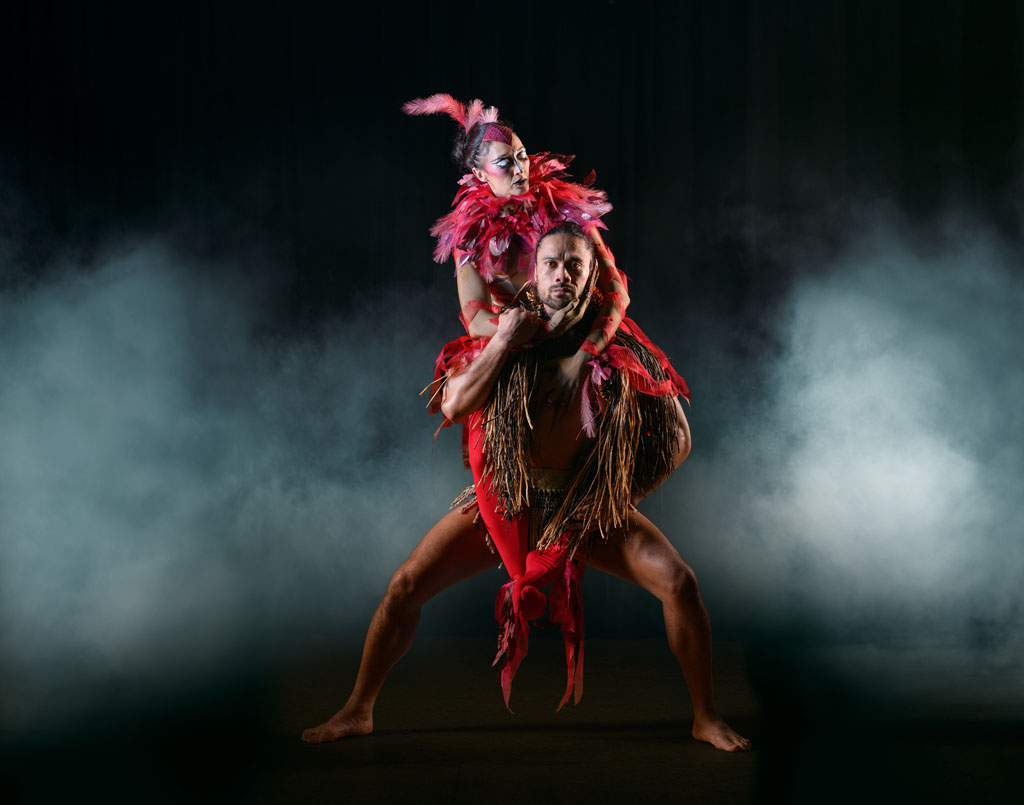
Subscribe to CX E-News
Hatupatu Kurungaituku brought to life with captivating aerials and immersive multimedia
‘Hatupatu Kurungaituku – A Forbidden Love’ from Wellington-based Taki Rua Productions opened Aotearoa New Zealand Festival of the Arts on 20 February, subsequently touring Auckland and Christchurch, and closing in Rotorua, the home of the legend, on 17 March. The iconic Te Arawa story of Hatupatu and the bird woman Kurungaituku was brought to life using gravity-defying choreography, kapa haka, and an immersive multimedia set that transformed the forests and geothermal landscape of Rotorua to create a fantastical bird realm.
The technical team for this breath-taking immersive dance performance was led by Sam Johnston, Director of YOOCrew, and multimedia was created by Delainy Kennedy, Director of Artificial Imagination and team. Sam Johnston became involved in October 2022, “I was having a beer with Tāne (Director and also Taki Rua Productions’ Chief Executive), talking rigging supply when he asked if I would like to come on board as Technical Manager, reviewing the original specs as the show evolved and making recommendations for appropriate gear and suppliers.”
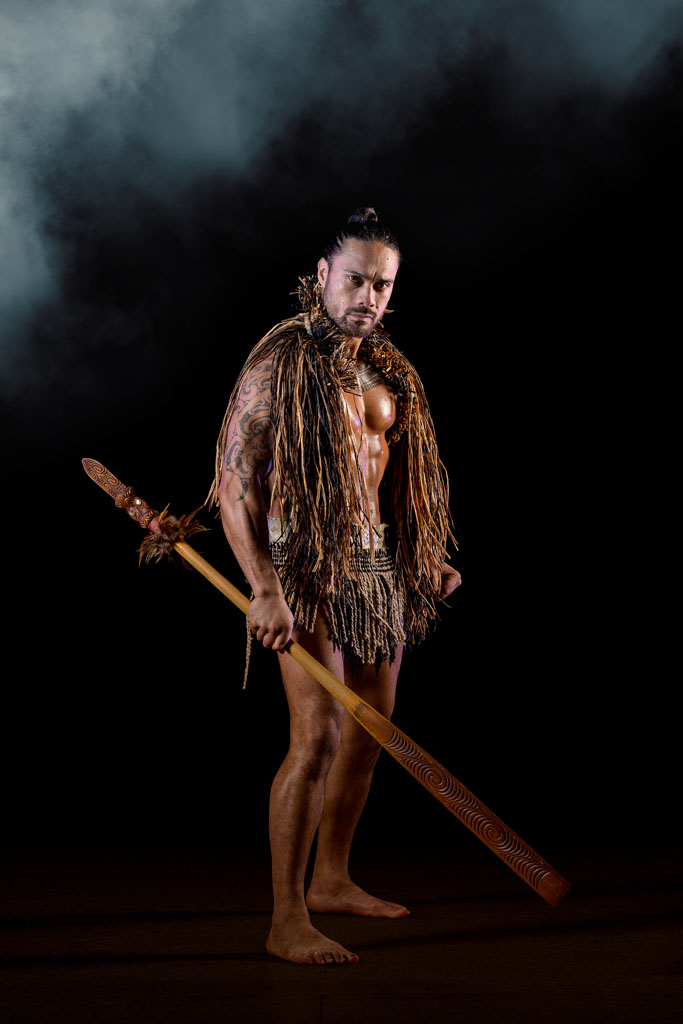
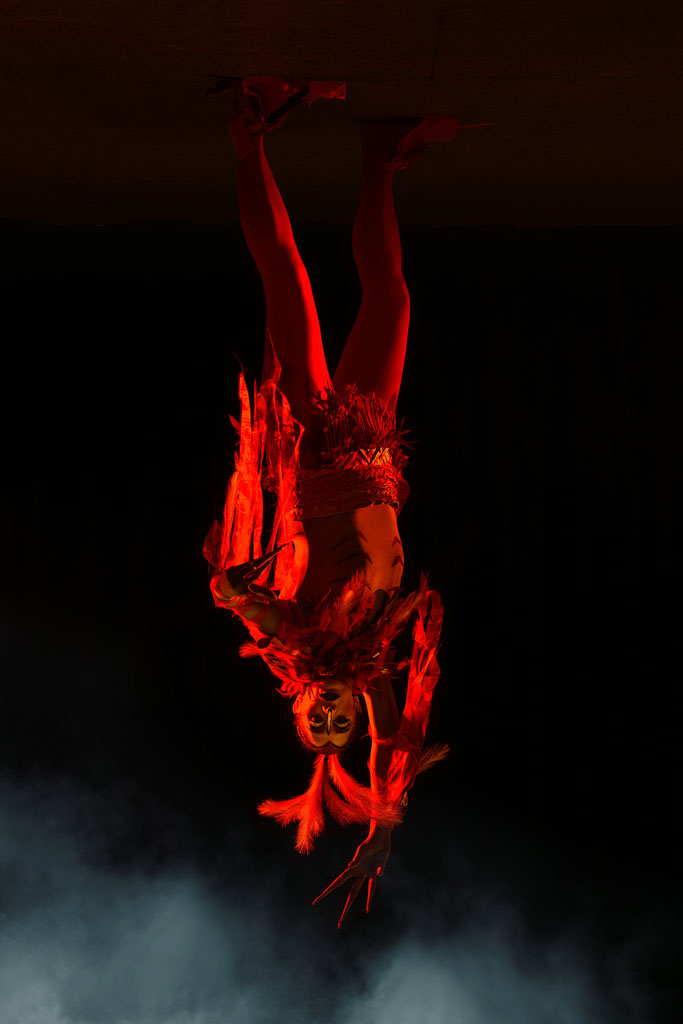
Delainy had joined forces with Tāne earlier in 2022. “The brief was somewhat loose,” Del chuckles, “Tāne gave me the script and the book and said to go from there. Most daunting were the notes in the AV sheet, for example ‘shot of bubbling mud.’ My challenge was to use the physical locations, the forests, the lakes and of course the bubbling mud, whilst avoiding the video simply becoming footage of Rotorua portrayed on a large screen.” Delainy brought in colleague Rachel Neser and rather than rely on standard photography, they used photogrammetry to create point clouds of the environments and generative AI to take the data and push it into a more metaphysical form, “We created particles that responded to turbulence, from a gentle breeze to a tornado, portraying the emotions and locations in the script, be it forest or geyser, but in an abstract way.”
Delainy’s biggest challenge was the budget, “Tāne is an amazing visionary and in the original design we had multiple screens including in the ceiling. Unfortunately, financial constraints meant we had to scale back to the one 5.5. by 9.6 metre screen. That’s definitely not an issue unique to this project though!” The sheer amount of data has also tested Del and his team’s creative processes, “We have worked hard on our workflow and choice of software, to enable us to move from some one to two thousand images of an object to one 3D model that we can manipulate in real-time. Our workflow consists of location capture with DJI drones and Canon DSLR cameras.
The captured images are processed through Davinci Resolve or Lightroom, then these images are fed into Reality Capture to create 3D models. The models are then brought into Notch, which enables us to create our content in real-time. Final renders are put into disguise d3 for show playback. We also used some stable diffusion models with ComfyUI to generate a base layer of moving imagery that we could manipulate in Notch.”
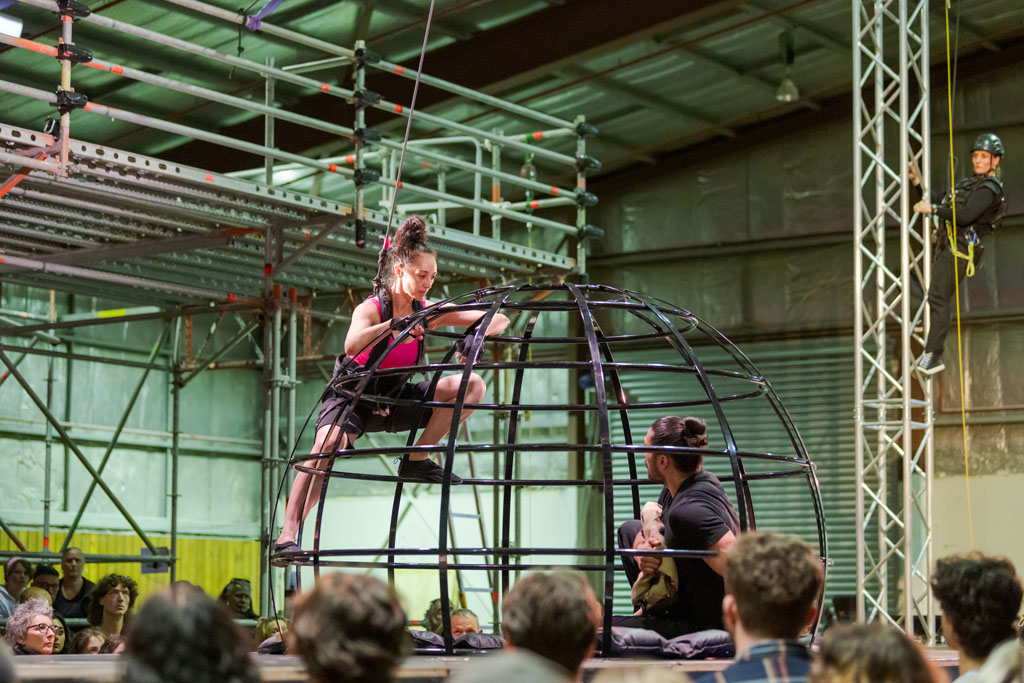
Meanwhile Sam set to work on designing a build requiring a huge amount of customisation. “Tāne’s vision has human counterweighted aerial performance, traverse automation, human swings and multiple stage trapdoors. Factor in a high stage with large scaffold gantries and a very tight time frame for removal, transportation, and reinstallation, and it is a hell of a build! While the show does not have a massive footprint, there are customised elements at every turn, from custom made lengths of truss, to effects built into the stage, to a touring black scaffold structure, supplied by Geeves Scaffolding.”
The first challenge was choice of venue, with many just too short or too tall, or unable to meet the required weight specifications. The team finally settled on Tāwhiri Warehouse in Wellington, Q Theatre in Auckland, Wigram Airforce Museum in Christchurch and the Energy Events Centre in Rotorua, using the same build with only minor tweaks, apart from in Auckland, “For Q Theatre we are using a different scaffold structure and taking advantage of the seating upstairs.” Hatupatu was the first ticketed production for Tāwhiri Warehouse, a cavernous new Wellington venue located behind Te Whaea National Dance and Drama Centre.
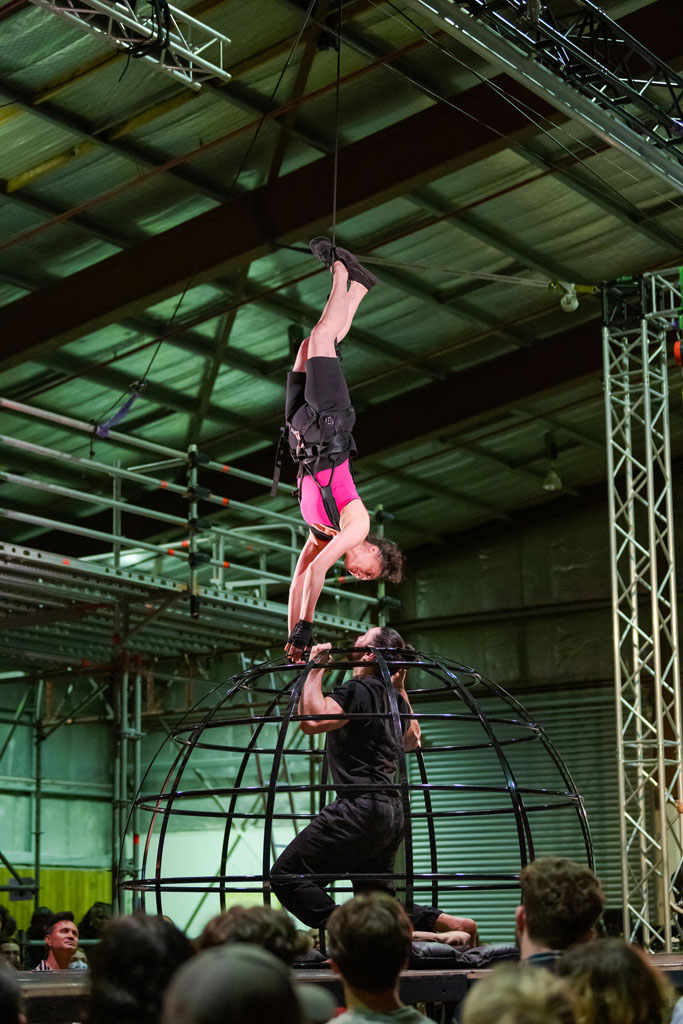
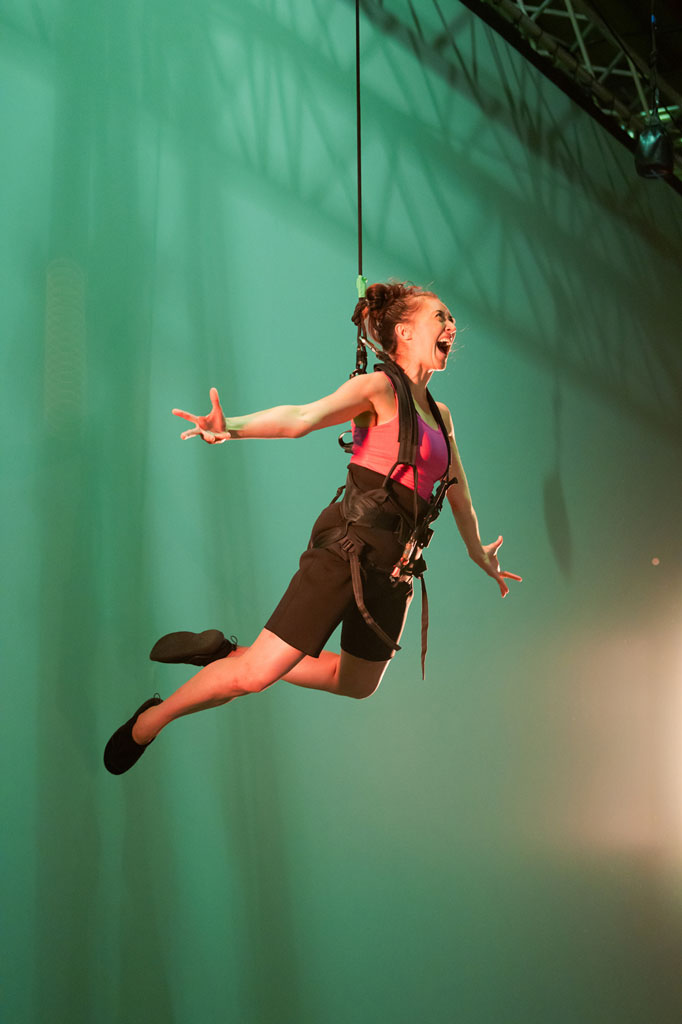
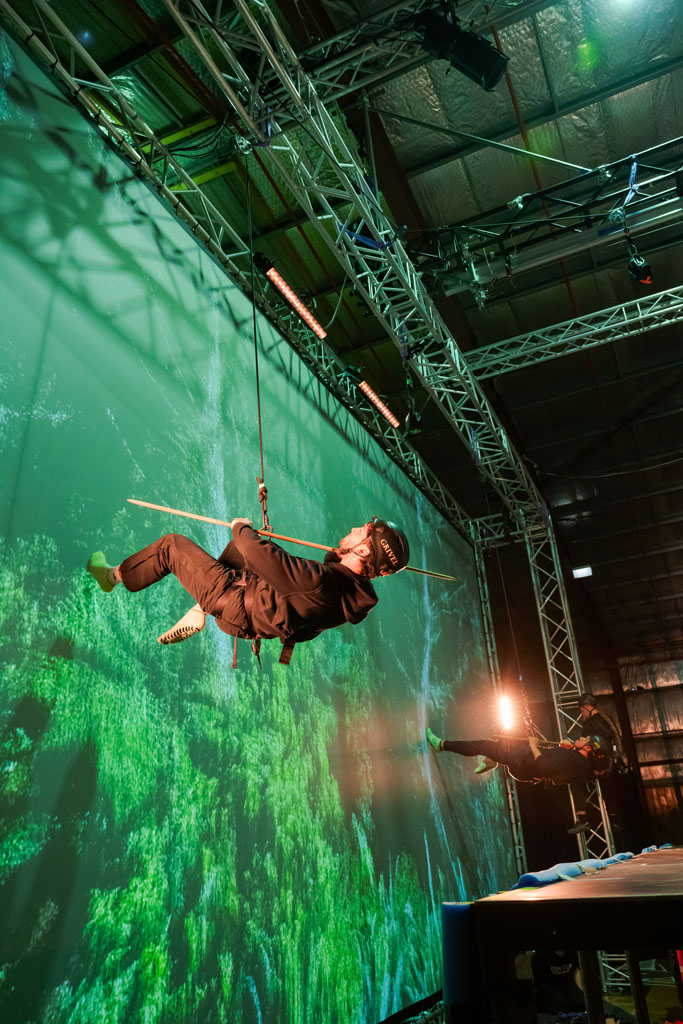
The amount of gear, the numerous aerials necessitating safety verification, and the tight touring schedule saw Sam invest a significant amount of time on logistics planning, “We have two trucks of customised scaffolding and two trucks of production equipment. And we are doing 29 shows in 28 days, with a timeframe that means if there are any issues with the ferry crossing between the Christchurch and Rotorua shows, it will delay pack in. There is no downtime in the schedule and from the technical management perspective we have a lot of complex elements that could go pear shaped.”
Whilst Delainy largely worked independently of the production team in advance of rehearsals, Sam engaged closely with Tāne, “I can’t speak highly enough of Tāne. He had an amazing vision and the law of physics didn’t really apply! So I did a lot of work on the development and design side of things, ensuring we achieved the deliverables safely and balanced budget practicalities.”
Sam has also collaborated extensively with the performers, “I have had huis with the dancers, and remain in constant contact via our Head Climber Connor Leech, to ensure that they have confidence in the structure. This is the first time I have had an entire cast who have never used a harness before, so it has been an interesting process. Doing 29 shows over 28 days, they need to know that bruising is to be expected but be able to identify the difference between normal ouch and concerning ouch!”
At the time of writing both Sam and Delainy were heading into rehearsals at Tāwhiri Warehouse, excited to see their vision of the build and visuals come to life. Tāne was equally as animated, “This unique experience elevates, quite literally, a beautiful Māori story which so many in Aotearoa have read from a young age, and inserts the audience right inside it. The forests, geysers, and the bird realm are visceral for the audience – the story unfolds above and around them. It is an experience we hope sheds new light on this legendary love story and secures its place in the hearts and minds of New Zealanders long into the future.”
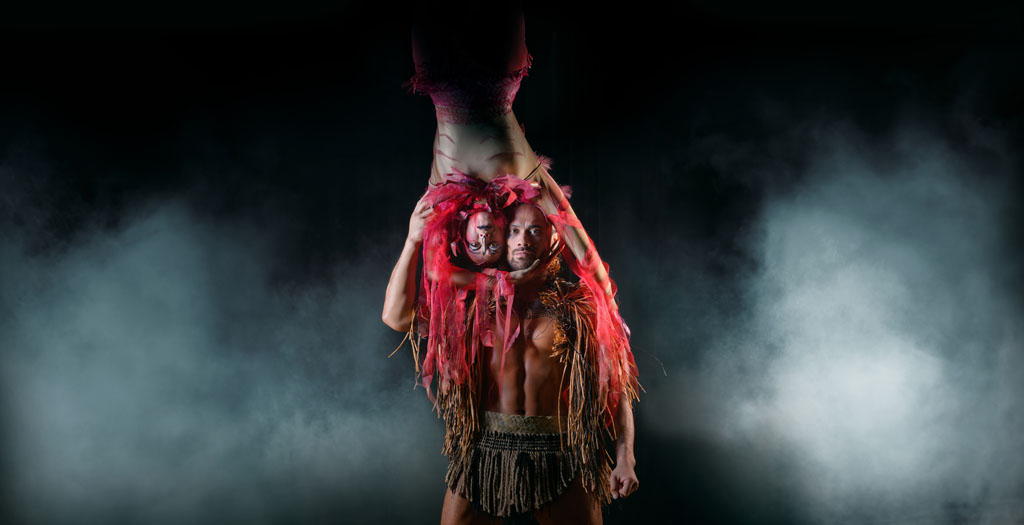
IN NUMBERS
The Build:
- 1.5m high stage with 6 trapdoors, 3 of which are double leaf or articulated
- 2 scaffold gantries, each 12.5 x 8m
- 4.4T of truss and lighting accessories suspended
- 92m 5 chord 300mm Truss 20m 5 chord 400mm truss 81m 4 chord 400mm truss 2 automation winches
- 8 sticks of customised truss
- 2 B trains of custom painted black scaffolding (leap frogging cities)
- 10 Axis of Human fly systems
The Multimedia:
- 1x Panasonic RQ25k 1x disguise Solo 750GB show content
- 6000 images taken for photogrammetry 30 million vertices across 6 3D Models 300 hours capture and creation
- Less than two hours of render time
About Sam:
With strong roots in production rigging, Sam launched YOOCrew in 2019 with Nic Balkum and despite COVID, the company has grown, answering the need for qualified and experienced crew in specialist roles throughout New Zealand. With over 20 years in the events industry, Sam holds a variety of technical skills and qualifications. He is an electrician by trade, previously sat on the Executive Committee of Entertainment Technology New Zealand (ETNZ) and is a co-author of the ETNZ Guide to Safe Rigging Practices for the Entertainment Industry in New Zealand. Over the years, Sam has been a venue technical manager for arena, proscenium theatre, and concert halls in Wellington. In addition, he has toured both corporate events and productions throughout New Zealand.
About Delainy:
“My roots are as an AV technician before moving into the creative. I’ve spent 12 years building projections for live concerts, conferences, anything large-scale. More recently I’ve been working in the virtual production space, I developed my skills with video systems, particularly disguise.” Delainy learnt the ropes with Spyglass and Darkroom Motion Graphics, and his own business Nocturnal, before heading to Berlin to Pixway GmbH touring auto shows in the US, India and Asia. His contribution to Pixway GmbH’s trade shows continue to this day, most recently at the Frieze Art Fair in Seoul, mapping a BMW i5 with nine 20k projectors. In August 2021 he established Artificial Imagination, currently as a team of three, “We have a strong base in the arts. Recent projects have included The Art of Black Grace 1/5 & 2/5, combining motion graphic animation, footage manipulation and VFX to create a seamless 360-degree short film of immersive dance performance.
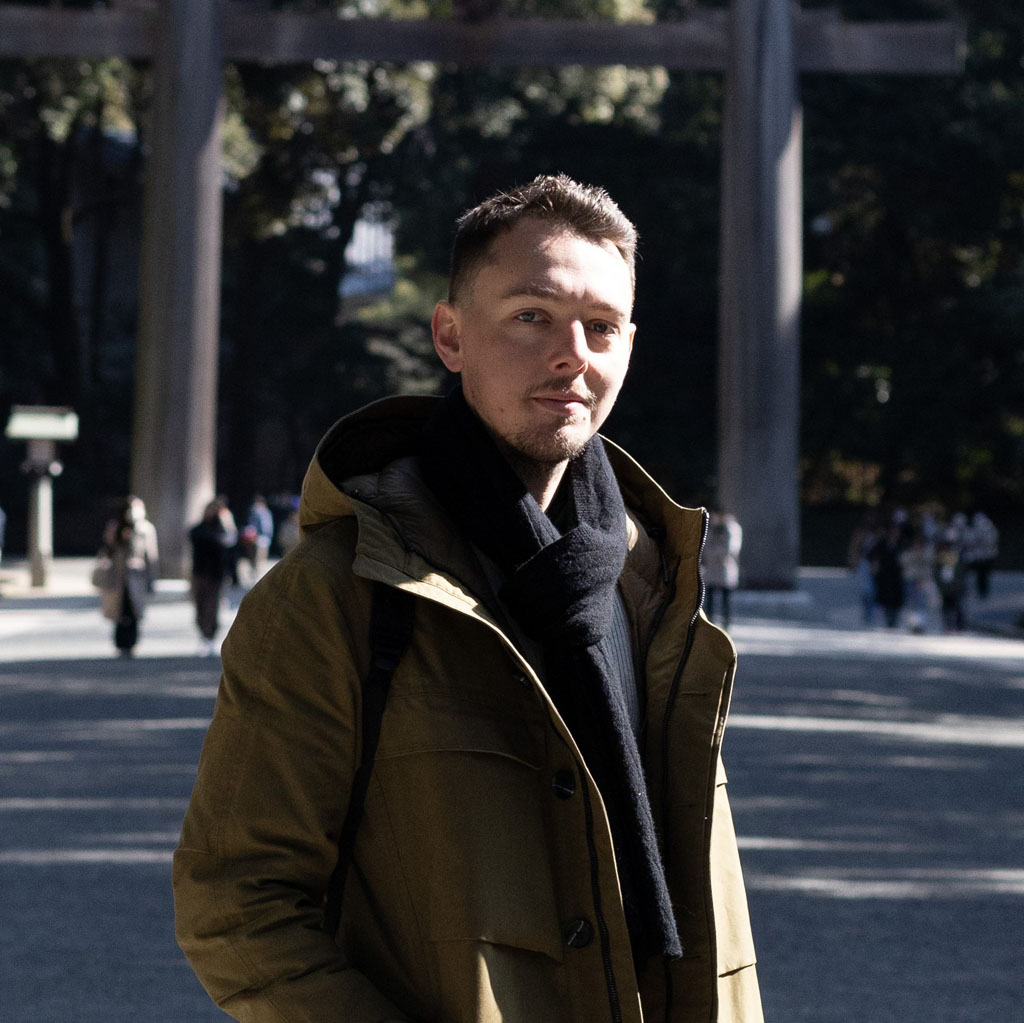
Subscribe
Published monthly since 1991, our famous AV industry magazine is free for download or pay for print. Subscribers also receive CX News, our free weekly email with the latest industry news and jobs.




